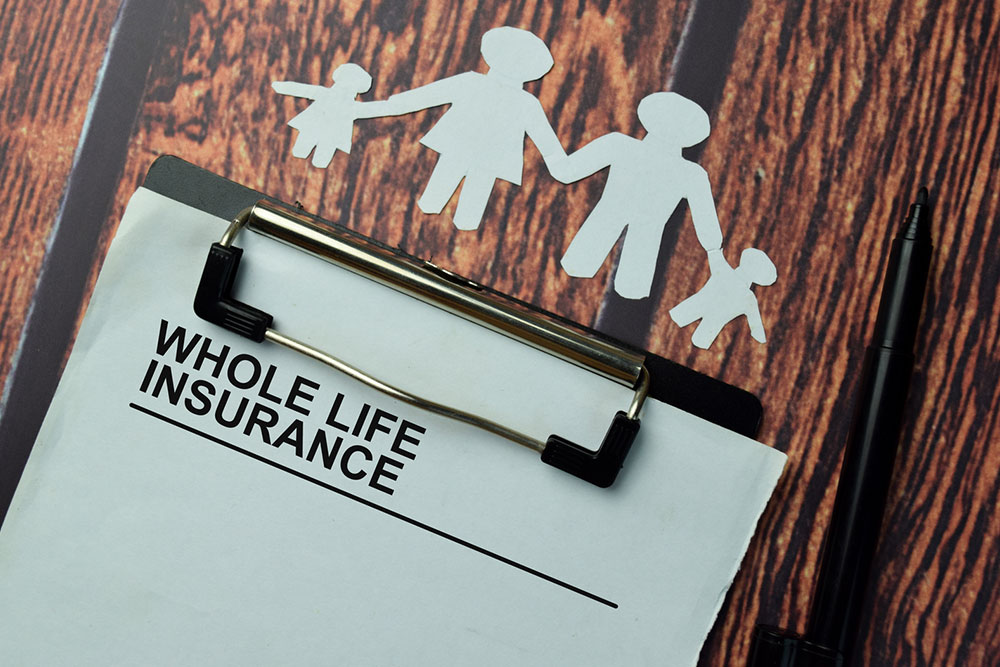
Whole life insurance – 6 key features to know
Life insurance serves two purposes: providing financial protection to the insured and their loved ones and accumulating savings. One can consider opting for a whole life insurance policy, a type of permanent life insurance, which means the coverage lasts throughout the insured’s life. This is different from term insurance, which offers coverage for a fixed period. If considering buying whole life insurance, learning about its features can help one make an informed decision.
Key features
1. Permanent coverage
Whole life insurance lasts throughout the life of the insured, in contrast to temporary life insurance, like term life insurance, which expires after 10, 20, or 30 years. The purpose of whole life insurance is to align with the policyholder’s long-term financial plans, like inheritance planning and charity contributions following the policyholder’s death. Also, certain types of whole life insurance policies allow one to participate in the profits of the company and earn dividends over a long period.
2. Cash value growth
Whole life insurance comes with a cash value component. Part of each premium payment goes toward this component, and over time the policy has the potential to accrue a sizable sum as cash value. The cash value of the policy can be utilized through withdrawals or loans. One can use the cash value to cover the monthly premium payments instead of continuing to pay for them out of pocket. The majority of whole life insurance policies in the country also provide the option to receive dividend payments from the insurer every year.
3. Level premiums
Whole life insurance comes with level payments or premiums, i.e., the rates are fixed for the term of the policy. So, policyholders make monthly payments of the same amount. The benefit of level premiums is affordability, as the monthly premium is likely to be a relatively smaller portion of their expenses as the policyholder gets older. Another benefit is predictability, as the policyholder always knows how much is required each month without worrying about a sudden increase in the amount.
The monthly premium for whole life insurance policies is determined by averaging the premium costs over an extended period, up to 95 or 100 years. As whole life insurance is designed to provide the policyholder with both immediate protection in the event of death and long-term growth in cash value, certain policies can offer a modified premium payment system, where the amount of premium changes with age. One can also choose limited payment whole life insurance plans, in which they can pay the entire premium amount over a shorter period. So, they will end up paying off the insurance faster rather than making a monthly payment all their life. With this plan, the premiums do not change over time.
4. Tax benefits
Similar to a retirement savings account, the money in the cash value account of the policy grows tax-free. However, if one withdraws the cash value, which includes investment gains, the portion will be taxable. Also, one has the option to borrow against their whole life policy. However, they can only apply for a loan if the policy has been in effect for three years and they have paid premiums on time. This gives policyholders some flexibility in managing their finances. For instance, one gets to avoid a separate loan or dip into the savings.
5. Room for riders
Riders are optional benefits that help one customize the policy, but they are available at an additional cost. They only apply in certain situations and provide additional financial support when the insured or the family faces certain types of risks. Whole life insurance plans do allow for riders to be added to the policies. These riders could be the return of premium, waiver of premium, long-term care, and critical illness rider (which lets the insured take money from their benefits if they have been diagnosed with a critical illness).
6. Guaranteed policy payout
Whole life insurance pays beneficiaries after the policyholder’s death. This protects loved ones in their time of need. Another key feature to note is that this monetary benefit is generally not subject to federal income taxes. The payout of a whole life insurance policy can be used for funding a trust, which can provide for the policyholder’s children in the future. The policy can also help in paying estate taxes. The policy can assist the policyholder’s heirs in meeting their estate tax obligations. Finally, the whole life insurance policy can finance a buy-sell agreement. If one owns a firm with a partner, they may require perpetual life insurance to cover the amount to purchase each other’s shares in the event of death.
So, the unique features of whole life insurance set it apart from other life insurance policies. The versatility of this type of insurance enables policyholders to meet various financial goals, which would be impossible with term life policies. That’s why whole life insurance can be a good option for those who want the guarantee of monetary coverage throughout their life along with an investment component. To choose the best whole life insurance plan and provider, one should carefully review policy features, provider terms, and premium amount before signing the policy documents.


